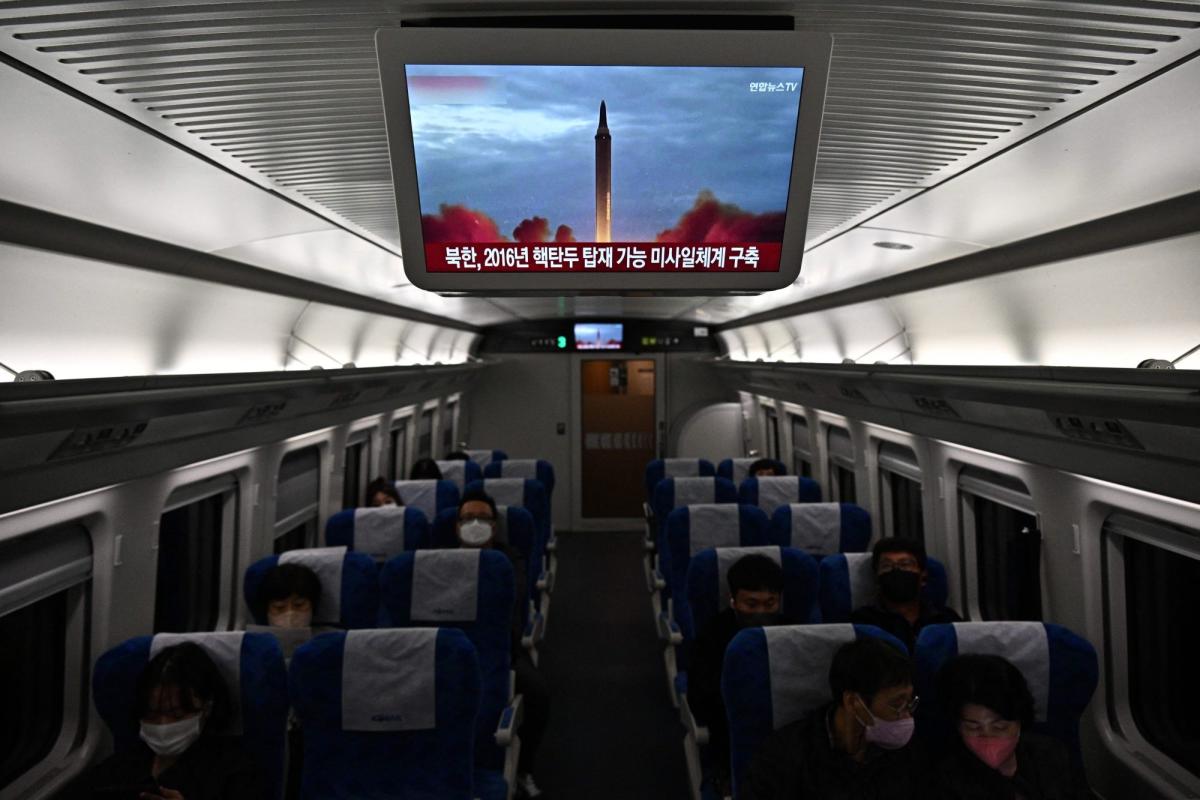
(Bloomberg) — The US condemned what it said was the test-launch of an intercontinental ballistic missile by North Korea on Thursday, as Pyongyang continued a barrage of weapons tests to protest allied military drills.
Most Read from Bloomberg
The US urged North Korea to halt further “destabilizing” tests and return to negotiations over its nuclear weapons program, State Department spokesman Ned Price said in a statement. The suspected ICBM was launched from an area near Pyongyang around 7:44 a.m. and flew eastward toward Japan, reaching an altitude of 1,920 kilometers (1,200 miles), according to South Korean data.
“This launch is a clear violation of multiple United Nations Security Council resolutions and demonstrates the threat the DPRK’s unlawful weapons of mass destruction and ballistic missile programs pose to its neighbors, the region, international peace and security and the global non-proliferation regime,” Price said, referring to North Korea’s formal name.
The missile was likely a Hwasong-17 that failed in flight, the Yonhap News Agency reported, citing an unidentified defense official, referring to a newer, larger rocket that was believed to have suffered a high-profile failure over Pyongyang in March. The South Korean Defense Ministry declined to comment on the report.
The missile was one of at least three fired by North Korea on Thursday, including two shorter-range rockets that fell into the sea between the Korean Peninsula and Japan. North Korea earlier this week threatened to take “powerful measures” if the US didn’t halt military drills with partners including South Korea, firing off at least 23 missiles on Wednesday.
North Korea is barred from conducting ballistic missile tests under UN resolutions intended to pressure Kim Jong Un to give up his nuclear weapons program. The US and its allies believe Kim, who in September reaffirmed his refusal to disarm, is laying the groundwork to conduct his first test of an atomic bomb in five years.
The US and South Korea this week started air drills known as Vigilant Storm that will run through Friday and involve about 240 aircraft in about 1,600 sorties to “hone their wartime capabilities,” the US 7th Air Force said in a statement. The drills have added to a series of joint exercises on land, sea and air in recent weeks, some of which have also included Japan.
The suspected ICBM launch Thursday prompted Japan to issue text-message warnings, known as J-Alerts, for citizens to take cover. Tokyo initially said the missile flew over the country’s territory, although Japanese authorities later retracted that claim.
“At the time the J-Alert was activated, there was a possibility that the missile would pass over the Japanese archipelago — based on its trajectory — so the J-Alert was activated,” Chief Cabinet Secretary Hirokazu Matsuno told reporters in Tokyo. North Korea fired a ballistic missile over Japan last month, the first such test since 2017.
Read more: North Korea Fires Off Biggest-Ever Daily Missile Barrage
Washington, Tokyo and Seoul have promised a coordinated response if Pyongyang detonates an atomic device, which would also violate Security Council resolutions. The nuclear test might be used to advance Kim’s pursuit of miniaturized nuclear warheads to mount on missiles to strike South Korea and Japan, which host the bulk of America’s troops in Asia.
The North Korean leader is finding space to ramp up provocations as the Biden administration focuses on Russia’s war in Ukraine. Russia and China, two long-time partners of North Korea, have veto power at the Security Council and have shown no intent to punish Kim with extra sanctions.
North Korea has had trouble successfully testing its biggest and newest ICBM, the Hwasong-17. It’s considered by experts to likely be the world’s largest road-worthy ICBM and likely designed to carry a multiple nuclear warhead payload to the US mainland.
A Hwasong-17 was believed to have blown up in the skies over Pyongyang shortly after take-off on March 16. Pyongyang tried to cover the failure by claiming with a slick video starring Kim that it successfully tested a “huge,” new ICBM while actually firing off an older rocket first launched in 2017.
–With assistance from Go Onomitsu, Aaron Clark and Shinhye Kang.
Most Read from Bloomberg Businessweek
©2022 Bloomberg L.P.




